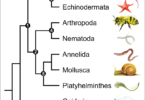Differences between binary and Multiple Fission, hi guys in this article we know about what is main difference between binary fission and Multiple Fission. Fission is type of asexual mode of reproduction in which a fully grown parental organism divides into two or more than two daughter cells. On the basis of number of daughter cells produced fission is of two types binary fission and Multiple Fission.
◆ Follow me on YouTube
Differences between binary and Multiple Fission is:- In binary fission, the parent cell divides itself into two equal and identical daughter cells during favourable condition. It is the most common form of reproduction in prokaryotes such as bacteria whereas In multiple fission, a single parent cell is divided into many daughter cells during unfavourable condition.
★ WATCH THIS VIDEO
Binary fission definition is it is division of adult parental body into two nearly equal daughter cells during favourable condition, it occurs in simplest and most common method of Asexual Reproduction found in protists like Amoeba, euglena, bacteria, green algae and some planarians ( flatworm).

Differences between binary and Multiple Fission
In binary fission the karyokinesis that is division of nucleus is followed by cytokinesis so nothing is left which parent body, daughter cells feed, grow and repeat the process, the organism undergoing binary fission are called Immortal as after binary fission nothing is left with parental body so there is no natural death.
On the basis of plane of cytokinesis the binary fission of three types:- 1)simple binary fission ,2)longitudinal binary fission and 3)transverse binary fission.
1) simple binary fission:- here cytokinesis may takes place along any plane but its plane is always perpendicular to that of karyokinesis, irregular or simple binary fission seen in amoeba, so nothing is left with parental Amoeba is completely divides into two daughter cell so it is Immortal as it suffers no natural death.
2) longitudinal binary fission:- here cytokinesis takes place along the longitudinal Axis for example flagellates like Euglena
3) transverse binary fission:- here to cytokinesis takes place along transverse Axis for example in ciliated Protozoa like Paramecium.
Multiple Fission definition is:- it is that type of asexual mode of reproduction in which the parental body divides into many daughter cells simultaneously during the unfavourable condition to increase the chances of survival of daughter cells, in this reproductive unit is whole parental body. Multiple Fission is found in number of organisms like algae among plants, plasmodium Malaria parasites, Amoeba and monocystis.
During Multiple Fission nucleus of parent divides repeated amitosis into many nuclei, each nucleus takes a bit of cytoplasm and form a daughter cells, some cytoplasm of parental body remain and used and it is residual body.
Differences between binary and Multiple Fission
Differences between binary and Multiple Fission is:- In binary fission, the parent cell divides itself into two equal and identical daughter cells during favourable condition. It is the most common form of reproduction in prokaryotes such as bacteria whereas In multiple fission, a single parent cell is divided into many daughter cells during unfavourable condition.
Differences between binary and Multiple Fission is given in following table
★ Binary fission:-
1) parent body divides into daughter cells
2) this type of fission occurs during favourable condition of food and environment
3) nothing is left with parent body after dividing into daughter cells.
4) this type of fission found in Amoeba, Euglena, Paramecium, bacteria, Chlamydomonas and Planarians
★ Multiple fission:-
1) parents body divides in many daughter cells
2) this type of fission occurs during unfavourable conditions
3) in this fission process residual body cytoplasm is left during the division of parent body into doughter cells.
4) this type of fission found in Algae, plasmodium malarial parasite, amoeba and Monocystis.






Leave a Comment